Growing raspberries from seed is easy to do and it’s much cheaper than buying raspberry canes at the nursery or garden center, although it does take a bit longer.
Starting raspberries from seed will give you lots of plants, which means you’ll have an abundant supply of fresh raspberries at harvest time.
In this article I’ll show you how to plant and care for seed grown raspberry plants.
This post contains affiliate links. Please read the disclosure for more info.

HOW TO GROW RASPBERRY PLANTS FROM SEED
Extracting the seeds
Raspberries are made up of tiny spheres called drupelets and each drupelet contains a seed.
It’s fairly easy to extract the seeds from fresh raspberries and there are a couple of ways to do it.
Method 1
Separate a few of the drupelets from the berry, as shown in the photo below.
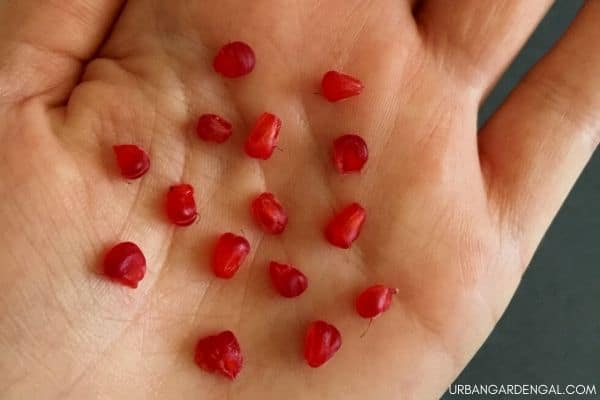
Hold the drupelet between your thumb and forefinger and squeeze it to release the seed.
Place the seeds onto a piece of paper towel and allow them to dry.
Method 2
Place a fresh raspberry in a mesh colander, sieve or strainer and use the back of a spoon to crush it.
Wash away the pulp with running water and place the seeds on a piece of paper towel to dry.
Each raspberry contains around 100 seeds so you’ll only need to crush one berry.
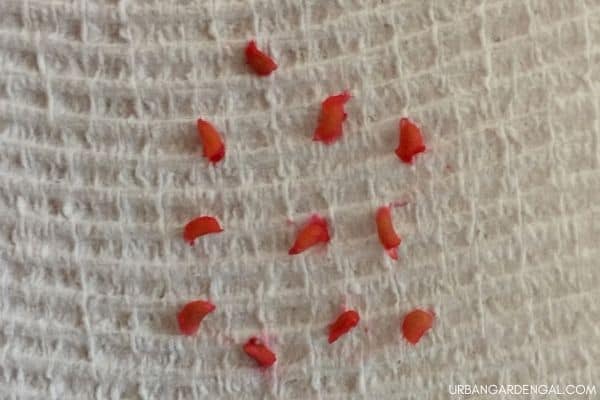
Purchasing raspberry seeds
You can also purchase a wide variety of raspberry seeds online including yellow raspberries, black raspberries as well as the classic red raspberry (Rubus idaeus).
Planting raspberry seeds
The best time to plant raspberry seeds is in fall because the seeds need a period of cool weather before they’ll germinate.
Plant the seeds about ¼ inch (6 mm) deep and 1 inch (2.5 cm) apart in a seed raising tray and place the seed tray outdoors in a cold frame during the winter months to cold stratify the seeds.
If you don’t have a cold frame you can place the seed tray in an unheated room or garage during the winter.
Spray the potting mix regularly with a spray bottle to prevent the soil drying out.
Once the temperature warms up to 60 ℉ (16 ℃) you can remove the tray from the cold frame and place it in a spot that receives dappled sunlight.
The seeds should germinate a few weeks after removing them from the cold frame.
Transplant the raspberry seedlings into individual pots once they reach 1 inch (2.5 cm) in height.

Caring for seed grown raspberries
Raspberry plants grow best in full sun, so choose a spot in the garden that receives at least 6 hours of sunlight each day.
If you’re planting more than one plant, space them out about 2 to 3 feet (60 to 90 cm) apart to give them plenty of room to spread out.
You can also plant raspberries in large containers if you have limited garden space.
Water the plants every week or two, taking care to ensure that the soil doesn’t become waterlogged.
Raspberry plants can be fertilized in early spring, when the canes start emerging, and again in late spring or early summer for a bumper crop.

Harvesting raspberries
Raspberry plants grown from seed can take up to 18 months to begin producing fruit but it’s worth the wait to have your own home grown raspberries.
You can begin harvesting the raspberries in late summer or early fall.
Raspberries are ready to be picked when they turn bright red in color.
You can eat raspberries fresh from the vine or store them in the refrigerator for up to 5 days.
Fresh raspberries can also be frozen by placing them in a freezer bag and removing all the air.
Raspberries will last in the freezer for up to a year.

After you’ve harvested the berries and the leaves begin to fade, you can cut all of the canes back to about an inch (2.5 cm) above the ground level. [1]
Cover the plants with aged compost to help protect them over winter and in spring you’ll have new canes popping up.
Here’s a quick video about caring for raspberry plants. I hope you’ll find it helpful.
So there are my tips for growing raspberries from seed.
With a bit of patience and care, you’ll be able to harvest your own fresh raspberries right from your backyard.
RELATED ARTICLES
- 12 Berry Vines For Backyard Gardens
- How To Grow White Strawberries
- 7 Cool Climate Fruit Trees
- How to Remove Blackberry Bushes
- 10 Climbing Fruit Plants
Have you tried growing raspberry plants from seed? Let me know in the comments below.
Are you on Pinterest? I have boards dedicated to Growing Fruit and Garden Ideas that you may enjoy. You can also find me on Facebook.

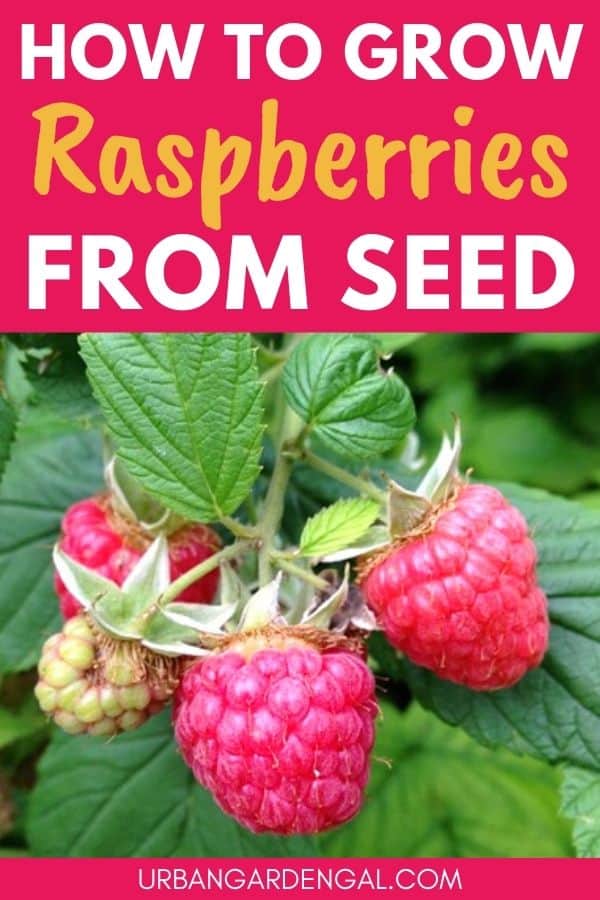
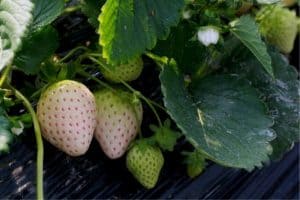
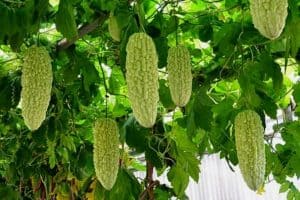


I haven’t tried growing raspberry plants from seed but I’m keen to give it a go. Thanks for this information
Thanks Liz, I’m glad you found it helpful. Good luck with your raspberry plants!
I have access to pre-fertilized black raspberry seed from the deer who ate my crop of wild black raspberries. Is there any use I can make of that?
Hi Jane, yes the black raspberry seeds should sprout from the manure. If you place some of it in a container and keep the soil moist the seeds should germinate.
This is a really interesting article considering that birds just eat the berries and poop out the seeds and are responsible for 99% of all the wild raspberries in the world…
Do you have a picture of the raspberry sprouts? I have just moved mine from their cold frame and have sprouts (YAY!) but the sprouts look so much like radish sprouts… did I get some random radish seeds in there, or is that what they look like. Thank you!